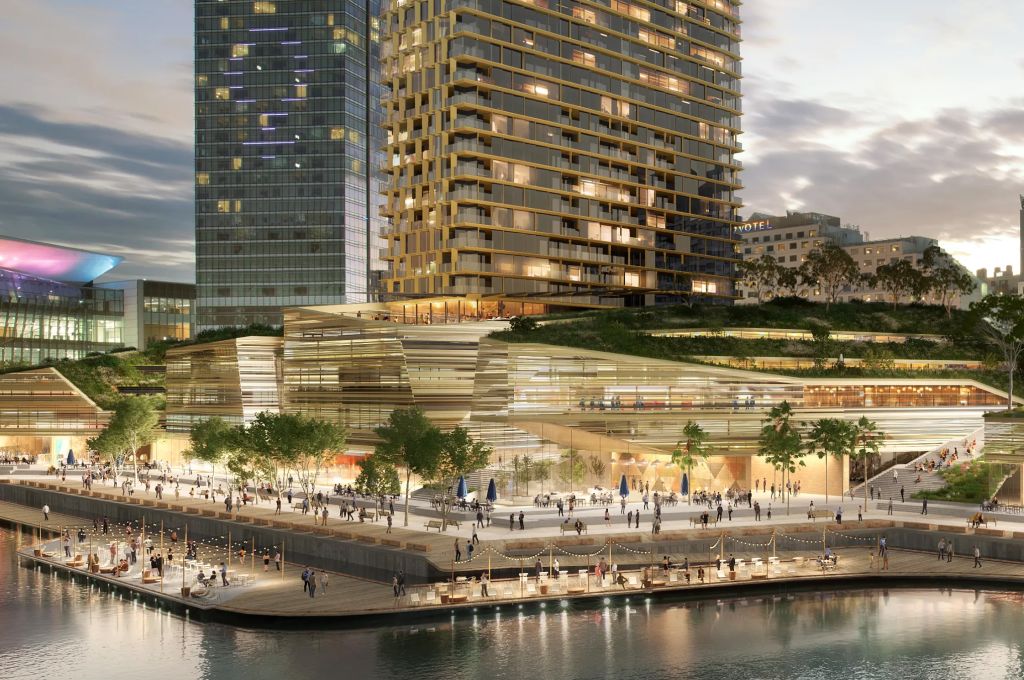
Mirvac boss says worst of COVID-19 is over as the economy rebuilds
Mirvac’s head believes the group has weathered the worst of the global pandemic and the property market will enter a new phase of working and living with all strains of COVID-19.
Chief executive Susan Lloyd-Hurwitz said the diversified structure of real estate group Mirvac had helped it navigate through the pandemic-hit first half where its retail portfolio took a hit but was offset by the stronger residential and industrial and logistics sectors.
“I suspect, and I hope I’m not jinxing us, that we’re through the worst of the lockdowns, we seem to have entered a new and different phase of living with COVID-19,” she said. “We expect that we’ve weathered the worst. And we are still on track on budget on time, with a very well controlled cost outlook.”
The ASX-listed group has a market value of $10.3 billion and has a split of operations between office and commercial, master-planned residential projects and the booming industrial sector. Mirvac has a development pipeline worth $12.9 billion.
In the six months to December 31, Mirvac reported a 44 per cent rise in statutory profit to $565 million and operating profit up 9 per cent to $297 million, equal to representing 7.5¢ per stapled security. The interim dividend of 5.1¢ will be paid on February 28.
Ms Lloyd-Hurwitz said the result reflects the group’s focus on navigating the ongoing disruption caused by the global pandemic, “while highlighting the strength of our diversified and integrated business model”.
Mirvac is the country’s largest medium to high-density residential developer and said despite higher interest rates looming, it had already secured 95 per cent of forecast earnings before interest and tax (EBIT) for the full year.
During the half Mirvac settled 1303 residential lots, up 21 per cent on the previous corresponding period and remain on track to deliver more than 2500 lot settlements in the full year.
It exchanged over 1800 residential lots, up 33 per cent on the first half of 2021, with four major apartment projects released and a further three apartment projects expected to be released in the months to the end of June.
“Broader fundamentals [for residential] remain positive, with limited supply, pent-up demand and the impending return of overseas migration,” she said.
Mirvac operates its other businesses under the banners of integrated investment portfolio being the office, retail, build-to-rent and industrial assets; commercial and mixed use developments which includes the planned $2 billion of the Harbourside mixed-use development at Darling Harbour, Sydney.
“As we expected, the extended lockdowns in the first half of the financial year impacted the performance of our integrated investment portfolio, concentrated in retail,” Ms Llyod-Hurwtiz said.
But she said rent collections had improved from 88 per cent in the last three months of calendar 2021 to about 92 per cent over the summer period.
“While we had expected to see conditions normalise in the first half of 2022, the spread of Omicron has presented a number of challenges,” Ms Lloyd-Hurwitz said. “This includes the impact of supply chain constraints and labour shortages on business activity, and the extension of the Commercial Code of Conduct for our retail tenants is also likely to put pressure on cash collection rates in the short term.”
Mirvac was the first major investor in the burgeoning build-to-rent housing market, which it sees as having significant growth potential to help address the national housing affordability issue. The group has $1 billion worth of BTR assets under construction.
Jarden analyst Andy MacFarlane said the earnings were in line with market expectations.
“A positive result from a residential momentum perspective, with settlements growing 21 per cent versus the prior period, and defaults back to historic levels with 95 per cent of full year 2022 EBIT secured,” he said.
“However, exposure to CBD retail and, to a lesser extent, office has impacted Trust portfolio performance in the first half and could well remain mixed looking ahead near term.”
He said the full-year guidance looks to assume resumption of normalised business activities in the second half of 2022, but notwithstanding, “we think the market was looking for at least a small upgrade at this result”.
Ratings agency Moody’s Investor Services, senior vice-president Matthew Moore, said while the results showed the resilience of the group’s diversified portfolio, he expects retail conditions to remain challenging in the second half.
“While uncertainty and risks remain for this segment, we note that the impact on Mirvac’s overall performance will be more limited relative to some other retail exposed Australian real estate investment trusts,” he said.










